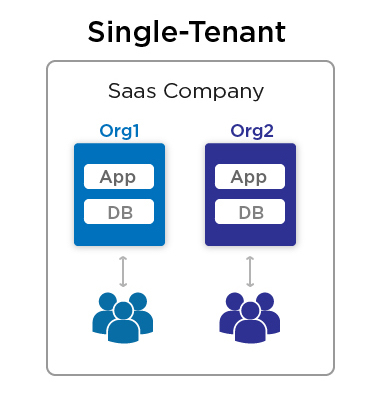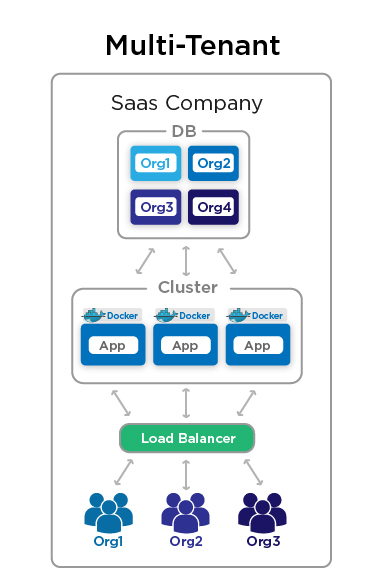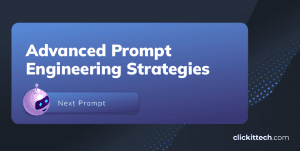We’ll break down the differences between single tenant vs multi tenant architectures. The main difference between them is that these software applications can serve either one or more customers at the same time. A single tenancy architecture is mainly used throughout the SaaS (software-as-a-service) cloud services or delivery models. On the other hand, a multi-tenancy, which is also an architecture of a single software application, serves multiple customers at a time.
By knowing the differences, people will understand how each architecture works and which model is the best solution for their needs. It’s essential to learn more about single tenant vs multi tenant so people understand the importance these two architectures have.
- What is a Single Tenant?
- Multi Tenant explained
- Single tenant vs Multi tenants
- Single Tenant Architecture
- Multi Tenant Architecture
- Why would you choose Multi Tenant Architecture for a SaaS application?
- Conclusion
What is a Single Tenant?
Single tenant architecture uses a software application and a database for each tenant (client). This means that clients can’t share the database or application between them because they all have their own instances of database and applications.
Single tenant architecture has a specific design, making it unique since it allows only one instance per every SaaS server. Moreover, it will enable people to build every piece of software for each client purposefully. When the software is installed locally, clients can change the UI (User Interface) at their own will after the installation is complete. That way, they can customize the software to fit their needs within a specific environment. However, they won’t have access to the underlying code.
It’s important to note that the single tenant architecture is also adaptable to Cloud computing. Usually, when someone uses a third-party cloud or even a private cloud service, in most cases it’s the single tenancy system.
Multi Tenant explained
Single tenant vs multi tenant comparison is straightforward. When we understand the basics of single tenant architecture, it’s much easier to explain how multi tenant architecture works. Basically, a multi tenancy is an architecture in which every instance of software application is serving more than one tenant (client). The multi-client architecture means that all clients will share the same database and application information, unlike in the single tenant architecture where every tenant has its own database and application.
The multi tenancy architecture is a fantastic solution for businesses wanting a more comfortable startup experience and a lower hardware requirement. The multi-tenant architecture has become the standard within enterprise SaaS environments. However, the multi-tenancy has other traits that we’ll mention in this article. People must realize that multi tenant architecture allows its users to make significant customizable changes within the software.
Other vital things that everyone must know about these two architecture models are that single-tenancy is much more expensive than its counterpart. Additionally, multi tenant architecture has very efficient resource usage and potentially has much larger computing capacities. It’s also worth mentioning that multi tenant architecture’s maintenance costs are much cheaper.
Read our slideshow to learn the best practices of Multi-tenant SaaS Architecture.
Single tenant vs Multi tenant
Benefits of using both architectures
Security and reliability: By implementing a single tenant architecture, the client’s data will ultimately be isolated from all other customers. This means that no one can access another’s sensitive data. Data security is the essential benefit that this architecture provides. Therefore, a single tenant architecture is considered more reliable. Here is a quick video about the importance of having a highly reliable environment on the Cloud. Without interference with other people’s activities, single tenant architecture allows clients to continue using their software even if another client is experiencing downtime during some cumbersome integrations.
Overall costs: A multi tenant structure provides various exchanges, like the exchange of databases, services, applications, and resources, while it costs less than a single tenant architecture. Scaling within the multi tenant architecture is also crucial since it has fewer implications, thanks to the possibility that the new users have. New users can access the same software as all the original buyers can. This means customers don’t have to pay costly fees to update the software. The maintenance costs within the multi tenant architecture are associated with a SaaS subscription. This means that they won’t be charged per case, as they are with a single tenant architecture.
Larger Computing Capacities and Self-Hosting Environment Migrations: When it comes to single tenant vs multi tenant benefits, the multi tenant has some advantages. The multi tenant architecture allows organizations to stay within the same infrastructure and data center. Therefore, clients won’t have to think about adding more computer or server capacity. Clients wishing to go from a SaaS environment to another, self-hosted environment can do it easily with a single tenant SaaS structure. It’s easy simply because all the information is already stored in one space, allowing secure transfers and data export into a new environment.
What are the limitations?
Although single tenant architecture is an excellent choice because of the security and reliability it provides, a single tenant structure is more expensive. Moreover, it’s not as easy to implement as the multi-tenant architecture because it requires much more resources and time for maintenance and customization. If you are diving into SaaS, I may recommend reviewing a general introduction to SaaS principles and best practices. There are many other costs of ownership that make the single tenant option less appealing to clients, but multi tenancy has its limitations as well.
Multi tenant structure is much more vulnerable from a security standpoint since it leaves behind many access points suitable for cyberattacks. Moreover, multi tenant structures don’t offer as many options for customization as single tenant structures do. This means that the multi tenant architecture users will have less control over environmental quality.
Single tenant vs multi tenant architectures: both have their upsides and downsides. Another essential limitation of a single tenant structure is that it requires more maintenance than a multi tenant structure. Single tenant architecture needs to be updated and upgraded by the client, while the multi tenant architecture uses the universal upgrades launched for all the users at once.
Single Tenant Architecture
People often aren’t sure which architecture to choose, but single tenant vs multi tenant architectures are pretty straightforward. Regarding single tenant architecture, this structure allows users to use a piece of software as a single instance per each client on the SaaS server.
We’ll try to explain how the single-tenant structure system works by providing you with a real estate example, which should be easy enough to understand.

If you think of a server environment as an ecosystem, it’ll be much easier to explain how the single tenant architecture works. Imagine that every client has its very own office building. All these buildings are located on the same street. The street represents the same server from which all the SaaS clients operate. Every client runs its operations from within their buildings. The buildings are lined-up next to each other on the street.
Multi Tenant Architecture
We’ll use the same descriptive method of the above real estate example for multi tenant architecture. Multi tenant architecture can be described as the environment in which clients are offices, but, in this case, all of the offices (clients) are located within the same building. Every client works from its own space within a large SaaS software product, making it much more comfortable and more accessible in some cases.

The single tenant vs multi tenant architectures have their similarities, but they have their differences as well. Multi tenant SaaS architecture is based on the B2B ecosystem in which two or even more parties can collaborate on the same activity simultaneously while the single tenant architecture does not provide this capability to its clients.
Startup businesse use multi tenant architecture since it allows them various benefits. However, if a company wants to transition from a finely-managed business environment to a self-hosted environment, the multi tenancy is not the answer for them.
Why would you choose Multi Tenant Architecture for a SaaS application?
It’s well-known that the clouds store, manage, and govern our data, which depends mostly on its architecture (foundation). Therefore, choosing the right foundation is of the utmost importance. It is also important to define where to use multi-tenancy. Nowadays, developers and businesses tend to choose the most efficient and cost-effective architecture when developing SaaS applications.
The fight between the single tenant vs multi tenant architecture rages on since both of these architectures have their advantages and disadvantages. However, we’ll discuss more why multi tenant SaaS architecture is the right choice when designing a multi tenant SaaS application.
The multi tenant approach models are divided into:
- Logical Data Separation is a model that allows all tenants the possibility to utilize only one database. All of their data is securely separated within the same database by implementing unique identifiers for every client. The codebase retrieves and stores the data via this unique identifier.
- Physical Data Separation is another model that successfully separates the data by utilizing different databases for different clients (tenants). This helps people scale the application according to the client’s growth and needs.
In the modern age, multi-tenancy is a part of numerous SaaS applications like Zendesk, Boho, Office 365, Slack, and many other on-demand apps. Cloud providers offer multitenancy. The multi-tenant approach or technique is basically the shared utilization of various computing resources. Remember that this model is not the same as virtualization, which is a similar concept.
The multitenancy environment allows clients to use the same application within the same operating environment (Slack) on the same hardware and storage. On the other hand, virtualization is different. With virtualization, all applications run on different virtual machines within their operating systems.
What is the perfect SaaS Tech Stack for your web application? Read the full blog to find out.
Most common multi tenant application structures
- Virtualization-based SaaS (containers) is probably the most complex setup because it involves a lot of interaction between the databases, apps, and containers.
Kubernetes vs Amazon ECS: Which is the best container orchestration?
- Multi Tenant SaaS is a bit less complicated model. However, the multiple schemas/databases, as well as the restrictions, are all done at the database level. The operating SaaS applications can often provide more close-up interaction with the database.
- URL-based SaaS is the most straightforward model to implement because it uses a single database and domain. This means that you have a specified URL like subdomain0.maindomain.com or subdomain1.maindomain.com, etc. It’s worth mentioning that security and data management are all handled at the app level. You should know that some SaaS can operate this way, like the ones that put the Web app interface between the database and the user.
Conclusion
When we talk about the single tenant vs multi tenant architectures, many things will come to mind. First of all, both tenant architectures have their pros and cons. Security-wise, single tenant architecture is a better option. On the other hand, cost-efficiency in the cloud is the main trait of multi tenant architecture. Multi tenant structure is an excellent choice for businesses working simultaneously through the same operating environment.
Multi tenancy doesn’t require much maintenance, which is an excellent perk. Unlike the single-tenancy architecture, the multitenancy architecture will upgrade automatically once the upgrade patch is universally distributed to its clients. Multi-tenancy architecture provides many more perks, and it’s much easier to handle, and that’s why many businesses opt for this architectural type. However, looking into single-tenancy architecture is good, so people can also know what it offers.
In case digital transformation is not something you feel comfortable with, feel free to contact the ClickIT consulting team, and our experienced DevOps team will help you go through everything together. As a certified GCP and AWS partner, we’ll help you overcome any obstacles you come across.
This blog was first published on Dzone.
Single Tenant vs Multi Tenant FAQs
The single-tenant architecture uses a software application and a database for each tenant (client). This means that clients can’t share the database or application between them because they all have their instances of databases and applications. A multi-tenancy is an architecture in which every instance of a software application serves more than one tenant (client). The multi-client architecture means that all clients will share the same database and application information
Multi-tenant architectures are beneficial for organizations seeking cost-effectiveness, scalability, and resource efficiency. They are well-suited for applications with a large user base where shared resources can be dynamically allocated, resulting in economies of scale.
Single-tenant solutions offer greater control over resource scaling and maintenance schedules, as dedicated resources can be scaled vertically or horizontally based on specific needs. On the other hand, multi-tenant architectures benefit from shared resources, allowing for more streamlined scalability and maintenance processes across multiple tenants.











